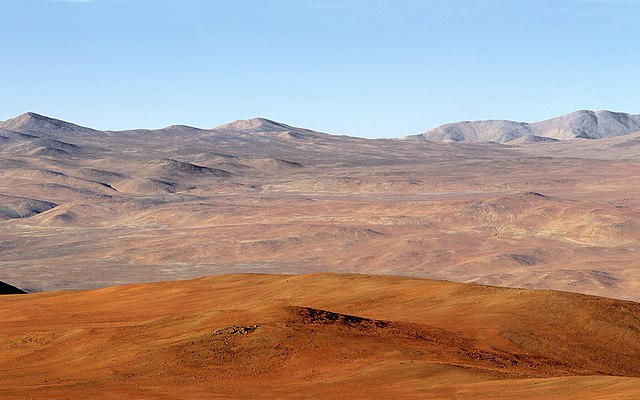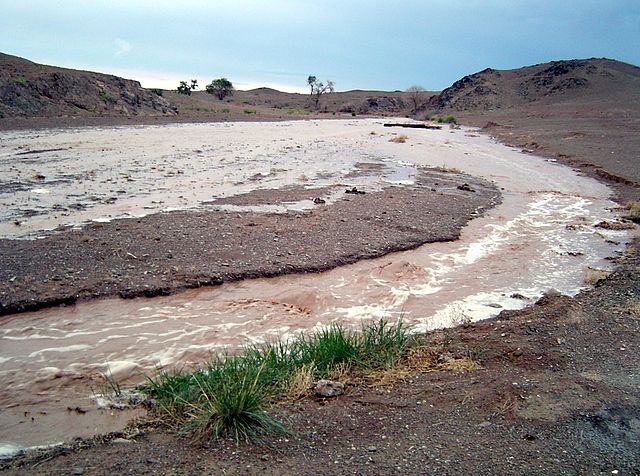The deserts of Australia or the Australian deserts cover about 2,700,000 km2 (1,000,000 sq mi), or 18% of the Australian mainland, but about 35% of the Australian continent receives so little rain, it is practically desert. Collectively known as the Great Australian desert, they are primarily distributed throughout the Western Plateau and interior lowlands of the country, covering areas from South West Queensland, Far West region of New South Wales, Sunraysia in Victoria and Spencer Gulf in South Australia to the Barkly Tableland in Northern Territory and the Kimberley region in Western Australia.
Typical landscape (Simpson Desert)
Wolfe Creek Crater in Western Australia
Pictographs known as Wandjina in the Wunnumurra Gorge, Barnett River, Kimberley, Western Australia
Strzelecki Desert in South Australia
A desert is a landscape where little precipitation occurs and, consequently, living conditions create unique biomes and ecosystems. The lack of vegetation exposes the unprotected surface of the ground to denudation. About one-third of the land surface of the Earth is arid or semi-arid. This includes much of the polar regions, where little precipitation occurs, and which are sometimes called polar deserts or "cold deserts". Deserts can be classified by the amount of precipitation that falls, by the temperature that prevails, by the causes of desertification or by their geographical location.
Sand and dunes of the Libyan Desert
Valle de la Luna ("Moon Valley") in the Atacama Desert of Chile, the world's driest non-polar desert
Atacama, the world's driest non-polar desert, part of the Arid Diagonal of South America
Flash flood in the Gobi








